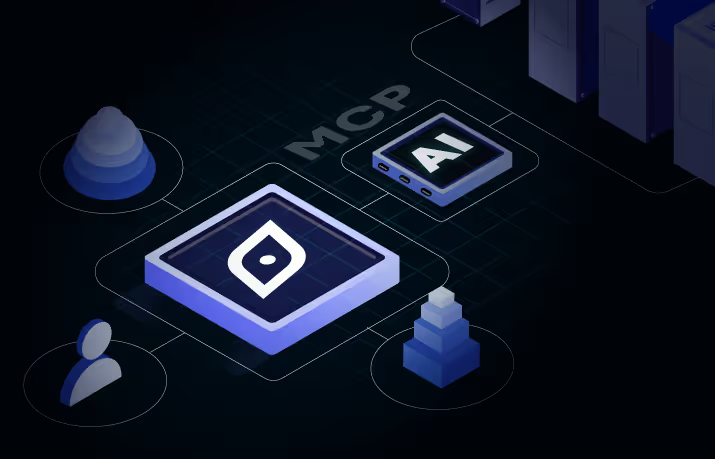Building Tomorrow's Workforce Leveraging AI-Powered Global People Analytics
Evolving beyond the traditional role of hiring, scouting for talent, and managing employee sentiments at scale, talent acquisition leaders are now strategic partners and architects of an organization’s overall growth, scaling up, and development.
At the core of modern talent acquisition practices lies a comprehensive people strategy that goes beyond transactional tasks to encompass talent management, reskilling, diversity & inclusion and organizational development.
This strategy is designed to attract, develop, and retain top talent through the growth phases and scale-up journeys of organizations, worldwide.
With the aid of predictive analytics, recruitment is no longer solely based on gut feeling. Talent acquisition leaders are leveraging in-depth global people analytics data to shape company culture, promote diversity and inclusion, and ensure organizational agility.
The rise of AI-powered global people analytics is further empowering Talent Acquisition leaders to identify initiatives, forecast engagement, and allocate resources efficiently.
With a focus on high-quality data, Talent Acquisition leaders can now leverage AI-powered global people analytics platforms and insights from global labor market datasets – to implement targeted strategies and align workforce capabilities with business goals to ensure organizational success.
A Comprehensive Insight on the Potential of AI-Powered Global People Analytics and Strategy
The role of Talent Acquisition leaders has evolved from transactional to strategic leadership.
The primary driver of this transformation is the adoption of AI-powered global people analytics, which enables talent acquisition teams to formulate a comprehensive approach to workforce management by leveraging data and analytics to support strategic decisions.
Here are the key pillars for an analytics-backed robust people strategy-
Globalization:
Managing legal, cultural, and remote work complexities, proves pivotal for global business success in an interconnected world.
Technological Advancements:
AI and machine learning empower talent acquisition leaders with deep insights from AI-powered global people analytics and personalized strategies, revolutionizing talent management and organizational efficiency.
Talent as a Competitive Advantage:
Strategically cultivates talent, fostering a culture of learning and innovation to sustain competitive advantage in dynamic markets.
Employee Experience:
Prioritize positive work environments, fostering engagement, productivity, and long-term retention of Talent Acquisition leaders through recognition and psychological safety.
Strategic Alignment:
Align recruitment initiatives with business goals, forecast talent needs and shape culture to drive innovation and seize opportunities.
Learning and Development:
Leverage predictive analytics and GenAI to design targeted training programs, empowering employees for growth and adaptability in evolving landscapes.
Performance Management:
Adopt agile, feedback-driven approaches, fostering accountability and continuous improvement through transparent performance metrics.
Diversity, Equity, and Inclusion (DEI):
With data-driven insights from AI-powered global people analytics, identify barriers to inclusion, and promote a culture of belonging. Build a workplace where you can harness the unique perspectives and talents of all employees, driving innovation and creativity.
Driving Global People Strategy with a 30% Rise in Talent Acquisition Efficiency
With more and more AI-powered global people analytics data, drilling down on employee data to find real insights and make a business-wide impact can be difficult. Too often data is scattered across multiple systems, data analysis isn’t a skill easily accessible on the team.
Leveraging AI-powered global people analytics can enable high levels of accuracy, quick scalability, and depth of insight, making it a powerful tool for talent acquisition teams.
Leveraging insights from AI-powered global people analytics, companies can unlock the full potential of their workforce, driving better business outcomes and maintaining a competitive edge.
What difference can it make?
Leveraging advanced analytics and data-driven insights from AI-powered global people analytics, Talent Acquisition leaders can gain a holistic view of global workforce dynamics. What can you achieve –

Key areas to focus on to achieve it?
- Retaining Talent Insights: Discover why employees leave and develop strategies to enhance retention rates.
- Elevating Employee Engagement: Optimize performance and foster a sense of belonging for maximum productivity.
- Performance Analysis: Address workload, communication, and diversity challenges to improve performance.
- Productivity Analysis: Evaluate dispersed workforce efficiency to enhance overall productivity.
- Cost-Efficient Workforce Planning: Streamline resource allocation for operational savings and efficiency.
- Skill Gap Identification: Close talent deficiencies to ensure a robust and adaptable workforce.
A Step-by-Step Guide to Implementing AI-powered global people analytics platforms
Before diving into the roadmap of a successful implementation of People Analytics Software, it is important to understand what it encompasses. At its core, the following are the typical elements that make up the AI-powered global people analytics platforms –

Now let’s discover how to successfully implement AI-powered global people analytics software –
Step 1: Define Your Objectives
Before diving into the implementation process, it’s crucial to define clear objectives for your people analytics initiative. What specific goals are you aiming to achieve?
Whether it’s improving workforce productivity, reducing turnover rates, or enhancing talent acquisition efficiency, having well-defined objectives will guide your implementation strategy of global people analytics and ensure alignment with your organization’s overarching goals.
Step 2: Conduct a Needs Assessment
Next, conduct a thorough needs assessment to identify the unique requirements and challenges of your organization.
Evaluate your existing recruitment processes, data sources, and technology infrastructure to pinpoint areas for improvement and determine the capabilities your global people analytics software needs to address.
Engage stakeholders across departments to gather insights and ensure buy-in throughout the implementation process.
Step 3: Select the Right Software
With your objectives and requirements in mind, begin the process of selecting the right global people analytics software for your organization.
Consider factors such as functionality, scalability, ease of use, and vendor reputation. Take advantage of demos, trials, and customer references to evaluate potential solutions and choose the one that best aligns with your needs and budget.
Step 4: Data Integration and Preparation
Once you’ve selected your people analytics software, it’s time to focus on data integration and preparation.
Identify all relevant data sources within your organization, including AI-powered global people analytics platforms, performance management tools, and employee surveys.
Work closely with your IT department to ensure seamless integration and data quality. Cleanse and standardize your data to ensure accuracy and consistency, laying the foundation for meaningful analysis.
Step 5: Customize and Configure
Customize and configure your people analytics software to align with your organization’s specific requirements and workflows.
Tailor dashboards, reports, and metrics to reflect the key performance indicators (KPIs) identified in your objectives.
Ensure that your software is configured to provide real-time insights and actionable recommendations, empowering users at all levels of the organization to make data-driven decisions.
Step 6: Training and Adoption
Invest in comprehensive training programs to ensure that your team is equipped with the knowledge and skills to leverage the full capabilities of your global people analytics software.
Provide hands-on training sessions, workshops, and resources to familiarize users with the AI-powered global people analytics software’s features and functionalities.
Encourage ongoing learning and collaboration to foster a culture of data-driven decision-making utilizing AI-powered global people analytics across your organization.
Step 7: Monitor and Evaluate
Once your people analytics software is up and running, establish a system for monitoring and evaluating its effectiveness.
Track key metrics and performance indicators to measure the impact of your people analytics initiatives on business outcomes.
Gather feedback from users and stakeholders to identify areas for improvement and iterate on your implementation strategy as needed.
Step 8: Continuous Improvement
Finally, embrace a mindset of continuous improvement as you refine and optimize your people analytics initiatives over time.
Stay abreast of industry trends and emerging technologies to ensure that your software remains cutting-edge and relevant.
Foster a culture of innovation and experimentation, encouraging collaboration and knowledge sharing across teams.
Top 5 Key Considerations for Implementing AI-powered global people analytics platforms
Implementing software requires careful consideration and planning to ensure its effectiveness and success.
Thus, here are some considerations you might want to keep in mind to build a strong foundation and harness the full potential of data-driven insights –
1. Securing Leadership Support:
Gain buy-in from organizational leaders to ensure the success of GPSA initiatives by aligning goals with broader business objectives and securing executive sponsorship.
2. Enhancing Data Literacy:
Invest in training and development programs to improve data literacy among Talent Acquisition leaders, empowering them to effectively leverage people analytics software and maximize its value.
3. Prioritizing Data Privacy and Governance:
Implement robust data privacy policies and compliance measures to address concerns related to data privacy regulations, conducting regular audits and partnering with legal and compliance teams for effective governance.
4. Bridging Skill Gaps:
Bridge skill gaps within talent teams by investing in upskilling and reskilling initiatives, ensuring that they possess the necessary skills in data analysis, statistics, and data visualization to effectively utilize people analytics software.
5. Driving Change and Adoption:
Overcome resistance to change and promote the adoption of people analytics software through effective change management strategies, including communication, stakeholder engagement, and organizational culture initiatives, while providing user-friendly interfaces and conducting training sessions to increase awareness and enthusiasm for GPSA initiatives.
Creating a Resilient Workforce with AI-Powered Global People Analytics
AI-powered talent insights are playing a progressively critical role in shaping decisions about our workforce, and Talent Acquisition leaders must step up. Starting a people analytics strategy can feel like a daunting task, particularly for those who are new to the concept. However, taking that initial step is key.
Implementing a people analytics strategy is not just about adopting new tools but transforming the way your organization thinks about and utilizes data. By starting with clear objectives and addressing potential challenges upfront, you lay a strong foundation for success.
This proactive approach enables Talent Acquisition leaders to make data-driven decisions that enhance workforce management, improve employee engagement, and ultimately drive organizational growth.
Embracing people analytics is a strategic move that positions your organization for sustained success in an increasingly competitive and data-driven world.


























.svg)



.svg)





.svg)
